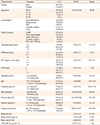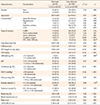1. Arora RC, Djaiani G, Rudolph JL. Detection, prevention, and management of delirium in the critically ill cardiac patient and patients who undergo cardiac procedures. Canadian Journal of Cardiology. 2017; 33(1):80–87. DOI:
10.1016/j.cjca.2016.08.020.

2. Evans AS, Weiner MM, Arora RC, Chung I, Deshpande R, Varghese R, et al. Current approach to diagnosis and treatment of delirium after cardiac surgery. Annals of Cardiac Anaesthesia. 2016; 19(2):328–337. DOI:
10.4103/0971-9784.179634.



3. Bokeriia LA, Golukhova EZ, Polunina AG. Postoperative delirium in cardiac operations: microembolic load is an important factor. The Annals of Thoracic Surgery. 2009; 88(1):349–350. DOI:
10.1016/j.athoracsur.2009.02.031.

4. Heckman GA, Patterson CJ, Demers C, St Onge J, Turpie ID, McKelvie RS. Heart failure and cognitive impairment: challenges and opportunities. Clinical Interventions in Aging. 2007; 2(2):209–218.


5. Bannon L, McGaughey J, Clarke M, McAuley DF, Blackwood B. Impact of non-pharmacological interventions on prevention and treatment of delirium in critically ill patients: protocol for a systematic review of quantitative and qualitative research. Systematic Reviews. 2016; 5:75. DOI:
10.1186/s13643-016-0254-0.



6. Brown CH, Laflam A, Max L, Lymar D, Neufeld KJ, Tian J, et al. The impact of delirium after cardiac surgical procedures on postoperative resource use. The Annals of Thoracic Surgery. 2016; 101(5):1663–1669. DOI:
10.1016/j.athoracsur.2015.12.074.



7. Mariscalco G, Mariani S, Biancari F, Banach M. Effects of statins on delirium following cardiac surgery - evidence from literature. Psychiatria Polska. 2015; 49(6):1359–1370. DOI:
10.12740/PP/60139.


8. Park EA, Kim MY. Postoperative delirium in elderly patients with osteoarthritis surgery: incidence and risk factors. Journal of Muscle and Joint Health. 2015; 22(2):57–66. DOI:
10.5953/JMJH.2015.22.2.57.

9. Ahmed S, Leurent B, Sampson EL. Risk factors for incident delirium among older people in acute hospital medical units: a systematic review and meta-analysis. Age and Ageing. 2014; 43(3):326–333. DOI:
10.1093/ageing/afu022.



10. Koster S, Hensens AG, Schuurmans MJ, van der Palen J. Risk factors of delirium after cardiac surgery: a systematic review. European Journal of Cardiovascular Nursing. 2011; 10(4):197–204. DOI:
10.1016/j.ejcnurse.2010.09.001.


11. Gosselt AN, Slooter AJC, Boere PRQ, Zaal IJ. Risk factors for delirium after on-pump cardiac surgery: a systematic review. Critical Care. 2015; 19:346. DOI:
10.1186/s13054-015-1060-0.



12. Lin Y, Chen J, Wang Z. Meta-analysis of factors which influence delirium following cardiac surgery. Journal of Cardiac Surgery. 2012; 27(4):481–492. DOI:
10.1111/j.1540-8191.2012.01472.x.


13. Cho NO. Study of factors influencing postcardiotomy delirium [master's thesis]. Seoul: Seoul National University;1985. 1–46.
14. Campbell N, Perkins A, Hui S, Khan B, Boustani M. Association between prescribing of anticholinergic medications and incident delirium: a cohort study. Journal of the American Geriatrics Society. 2011; 59:S277–S281. DOI:
10.1111/j.1532-5415.2011.03676.x.

15. Tse L, Schwarz SKW, Bowering JB, Moore RL, Barr AM. Incidence of and risk factors for delirium after cardiac surgery at a quaternary care center: a retrospective cohort study. Journal of Cardiothoracic and Vascular Anesthesia. 2015; 29(6):1472–1479. DOI:
10.1053/j.jvca.2015.06.018.


16. Smulter N, Lingehall HC, Gustafson Y, Olofsson B, Engström KG. Delirium after cardiac surgery: incidence and risk factors. Interactive Cardiovascular and Thoracic Surgery. 2013; 17(5):790–796. DOI:
10.1093/icvts/ivt323.



17. Gaudreau J-D, Gagnon P, Harel F, Tremblay A, Roy M-A. Fast, systematic, and continuous delirium assessment in hospitalized patients: the nursing delirium screening scale. Journal of Pain and Symptom Management. 2005; 29(4):368–375. DOI:
10.1016/j.jpainsymman.2004.07.009.


18. Kim K-N, Kim C-H, Kim K-I, Yoo H-J, Park S-Y, Park Y-H. Development and validation of the Korean nursing delirium scale. Journal of Korean Academy of Nursing. 2012; 42(3):414–423. DOI:
10.4040/jkan.2012.42.3.414.


19. Santos FS, Velasco IT, Fráguas R Jr. Risk factors for delirium in the elderly after coronary artery bypass graft surgery. International Psychogeriatrics. 2004; 16(2):175–193. DOI:
10.1017/S1041610204000365.


20. Kumar AK, Jayant A, Arya VK, Magoon R, Sharma R. Delirium after cardiac surgery: a pilot study from a single tertiary referral center. Annals of Cardiac Anaesthesia. 2017; 20(1):76–82. DOI:
10.4103/0971-9784.197841.


21. Van den Boogaard M, Pickkers P, Slooter AJC, Kuiper MA, Spronk PE, Van der Voort PHJ, et al. Development and validation of PRE-DELIRIC (PREdiction of DELIRium in ICu patients) delirium prediction model for intensive care patients: observational multicentre study. BMJ. 2012; 344:e420. DOI:
10.1136/bmj.e420.

23. Yun S-C. Imputation of missing values. Journal of Preventive Medicine and Public Health. 2004; 37(3):209–211.

24. Ibrahim K, McCarthy CP, McCarthy KJ, Brown CH, Needham DM, JanuzziJr JL, et al. Delirium in the cardiac intensive care unit. Journal of the American Heart Association. 2018; 7(4):1–11. DOI:
10.1161/JAHA.118.008568.

25. Steis MR, Fick DM. Are nurses recognizing delirium? A systematic review. Journal of Gerontological Nursing. 2008; 34(9):40–48. DOI:
10.3928/00989134-20080901-12.

26. Peterson JF, Pun BT, Dittus RS, Thomason JWW, Jackson JC, Shintani AK, et al. Delirium and its motoric subtypes: a study of 614 critically ill patients. Journal of the American Geriatrics Society. 2006; 54(3):479–484. DOI:
10.1111/j.1532-5415.2005.00621.x.


27. Zaal IJ, Devlin JW, Peelen LM, Slooter AJC. A systematic review of risk factors for delirium in the ICU. Critical Care Medicine. 2015; 43(1):40–47. DOI:
10.1097/CCM.0000000000000625.


28. Cereghetti C, Siegemund M, Schaedelin S, Fassl J, Seeberger MD, Eckstein FS, et al. Independent predictors of the duration and overall burden of postoperative delirium after cardiac surgery in adults: an observational cohort study. Journal of Cardiothoracic and Vascular Anesthesia. 2017; 31(6):1966–1973. DOI:
10.1053/j.jvca.2017.03.042.


29. Järvelä K, Porkkala H, Karlsson S, Martikainen T, Selander T, Bendel S. Postoperative delirium in cardiac surgery patients. Journal of Cardiothoracic and Vascular Anesthesia. 2018; 32(4):1597–1602. DOI:
10.1053/j.jvca.2017.12.030.


30. Koster S, Hensens AG, Schuurmans MJ, van der Palen J. Prediction of delirium after cardiac surgery and the use of a risk checklist. European Journal of Cardiovascular Nursing. 2012; 12(3):284–292. DOI:
10.1177/1474515112450244.


31. Siew ED, Fissell WH, Tripp CM, Blume JD, Wilson MD, Clark AJ, et al. Acute kidney injury as a risk factor for delirium and coma during critical illness. American Journal of Respiratory and Critical Care Medicine. 2017; 195(12):1597–1607. DOI:
10.1164/rccm.201603-0476OC.



32. Kotfis K, Szylińska A, Listewnik M, Strzelbicka M, Brykczyński M, Rotter I, et al. Early delirium after cardiac surgery: an analysis of incidence and risk factors in elderly (≥65 years) and very elderly (≥80 years) patients. Clinical Interventions in Aging. 2018; 13:1061–1070. DOI:
10.2147/CIA.S166909.


33. Kumar AK, Jayant A, Arya VK, Magoon R, Sharma R. Delirium after cardiac surgery: a pilot study from a single tertiary referral center. Annals of Cardiac Anaesthesia. 2017; 20(1):76–82. DOI:
10.4103/0971-9784.197841.


34. American Geriatrics Society Expert Panel on Postoperative Delirium in Older Adults. American Geriatrics Society abstracted clinical practice guideline for postoperative delirium in older adults. Journal of the American Geriatrics Society. 2015; 63(1):142–150. DOI:
10.1111/jgs.13281.

35. Simeone S, Pucciarelli G, Perrone M, Teresa R, Gargiulo G, Guillari A, et al. Delirium in ICU patients following cardiac surgery: an observational study. Journal of Clinical Nursing. 2018; 27(9-10):1994–2002. DOI:
10.1111/jocn.14324.









 PDF
PDF ePub
ePub Citation
Citation Print
Print




 XML Download
XML Download